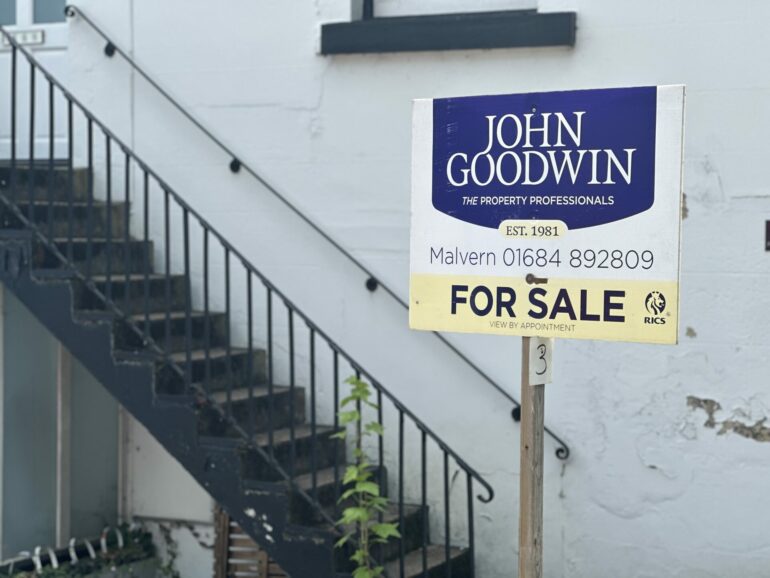The average asking price of property coming to the market has risen by 1.1% (£4,207) this month to £372,324, just £570 short of the record set in May 2023.
The annual rate of price growth now stands at 1.7%, the highest level in 12 months. This growth is largely driven by the top-of-the-ladder sector, which is seeing its strongest start to the year for price growth since 2014.
However, the market remains price-sensitive, with prices and activity rising more slowly in the more mortgage-dependent first-time buyer and second-stepper sectors.
The number of new sellers coming to the market is up by 12% compared to this time last year, and the number of sales being agreed is up by 13% as both seller and buyer activity rebound from last year’s subdued spring.
The largest homes, or top-of-the-ladder sector, show the most significant growth, with the number of new sellers up by 18% and the number of sales being agreed up by 20%.
On Thursday, 28th March, the market saw the highest number of new sellers coming to the market in one day so far in 2024, and the third-largest since August 2020.
There appears to be a window of opportunity for those considering a move, with a busy summer of sporting events and a likely General Election creating more home-mover distractions than usual.
Tim Bannister, Rightmove’s director of property science, said: “The top-of-the-ladder sector continues to drive pricing activity at the start of the year, with movers in this sector typically less sensitive to higher mortgage rates and more equity rich, contributing to their ability to move.
“While some buyers, across all sectors, will feel that their affordability has improved compared to last year due to wage growth and stable house prices, others will be more impacted by cost-of-living challenges and stickier than expected high mortgage rates.
“Despite these factors, it has been a positive start to the year in comparison to the more muted start to 2023. However, agents report that the market remains very price-sensitive, and despite the current optimism, these are not the conditions to support substantial price growth.
“Sellers who are keen to secure their sale will still need to price realistically for their local market and avoid being overambitious at the start of marketing to give themselves the best chance of finding a buyer.”
The number of new sellers in the mass-market, mortgage-dependent first-time buyer and second-stepper sectors is up by 10%, while the number of sales agreed is up by a more modest 9% and 13%, respectively. High mortgage rates are having a greater impact on movers in these sectors.
Overall, the number of sales being agreed is now level with 2019, despite more challenging buyer conditions. The average 5-year mortgage rate is now 4.84%, compared to 2.45% in April 2019, while average property prices are 22% higher. Affordability has been assisted by average wage growth of 27% over this period, slightly ahead of house price growth.
Kevin Shaw, national sales managing director at Leaders Romans Group, said: “We’re seeing an increase in ‘for sale’ and ‘sold’ signs in most areas and our own figures point to a successful first quarter.
“Applicant registrations are up 20% compared to Q4 2023. New instructions have increased too, but by a lower percentage, showing that the supply and demand gap is beginning to narrow. For those looking to buy or sell, now is the ideal time to put plans into action.
“Inflation falling to 3.2% in March suggests a Bank of England interest rate cut would be welcome sooner rather than later. Those wishing to achieve a quick sale should continue to be realistic about prices.
“The months leading up to the general election, likely to be in the autumn, may see a short-term pause in activity in the market. And the outcome of that election – and its impact on house prices and activity – is far from certain.”
Jim Parker, managing director at Fife Properties, added: “2024 is off to a good start with more properties coming on and more sales happening.
“Going into the end of spring, this will hopefully continue as inflation drops and the possibility of a base rate reduction is on the horizon.
“Price sensitivity is still an issue, and sellers need to be realistic in their pricing strategy and manage their expectations.
“The health of the property market is primarily gauged on the number of properties listed and sold, and it’s good to see these metrics improving compared with last year.”
Reaction
Tanya Elmaz, director of intermediary sales:
“The spring housing market has continued to blossom with latest figures indicating asking prices are rising by 1.1%.
“With the Bank of England holding the base rate for another month in an early sign rate increases may have peaked, and inflation is starting to head in the right direction; first time buyers and movers may take this opportunity to capitalise on this sense of optimism and take forward their property plans.
“Indeed, one emerging purchasing trend doing the rounds of late has been the flurry in “ultra-long mortgages” which exceed the state pension age. While these may be attractive to some borrowers who see them as a way of securing long-term certainty, it’s important not to overlook the fact this group will usually end up paying more in interest over the long run.
“There are other routes onto the market for those keen to get the keys quickly. Bridging loans are a great way to help unlock and access funds quickly, allowing buyers to snap up opportunities as they appear. It’s always worth speaking to an expert such as a mortgage adviser, who can thoroughly assess a borrower’s individual situation and find out what options are available to them



